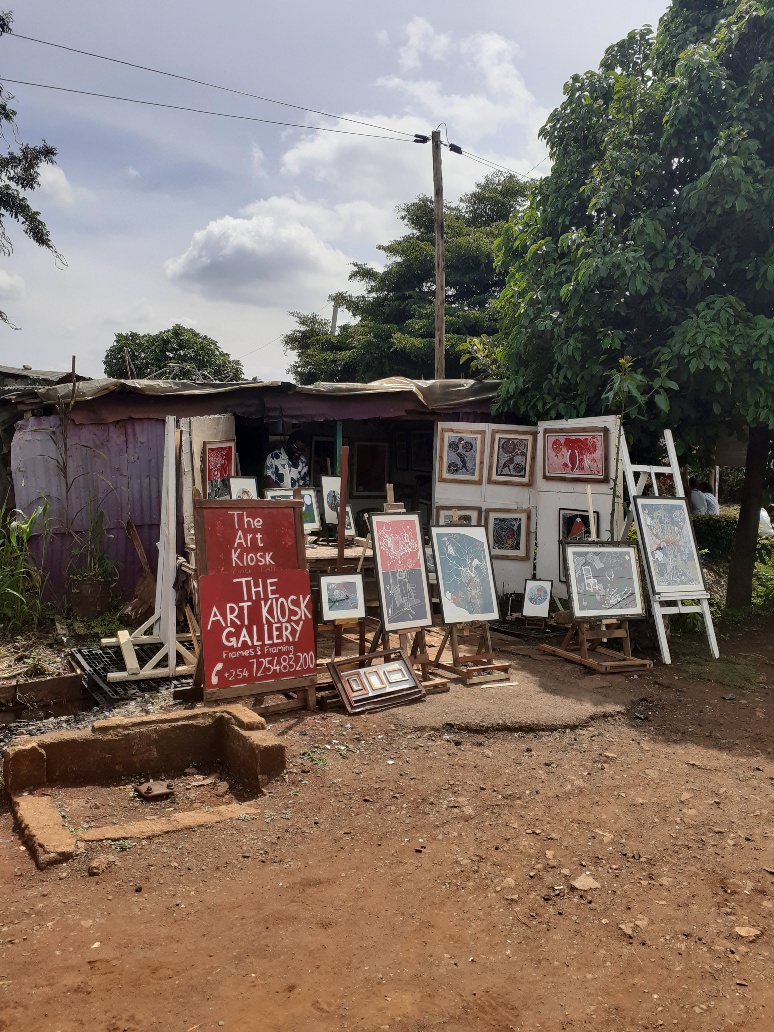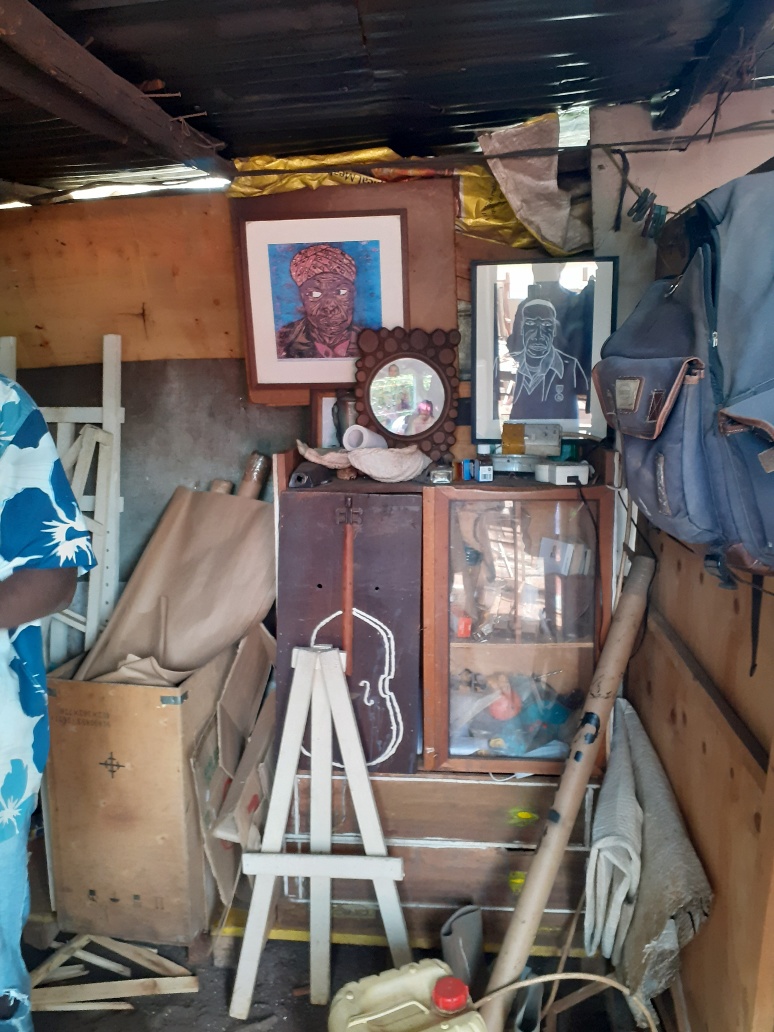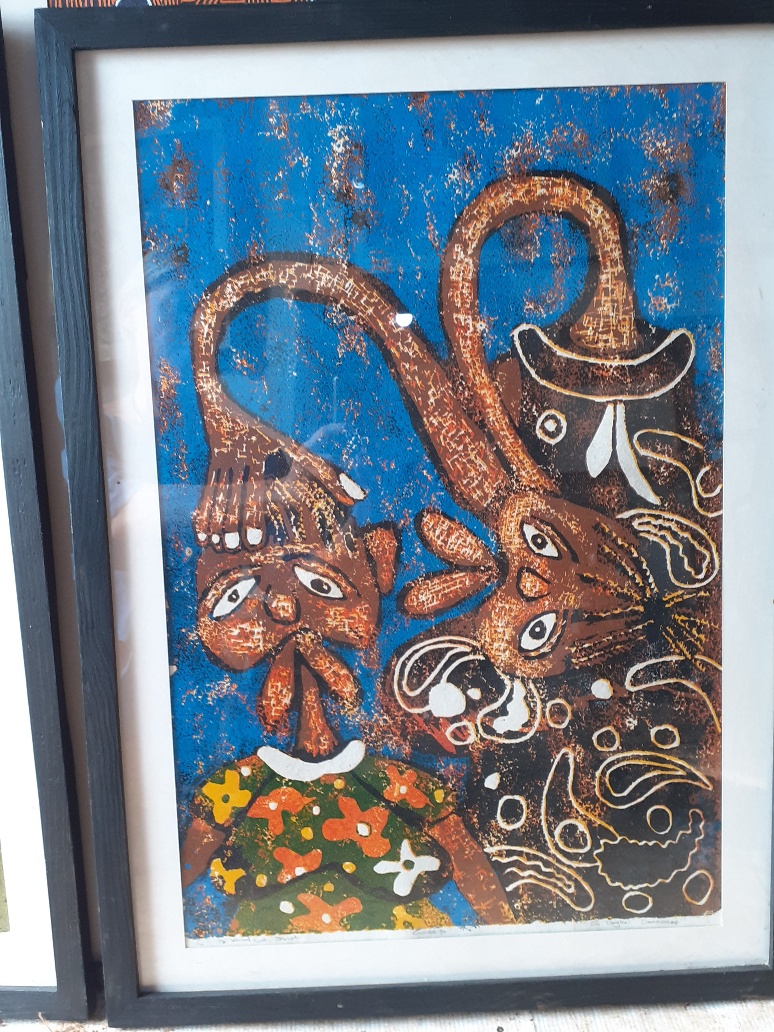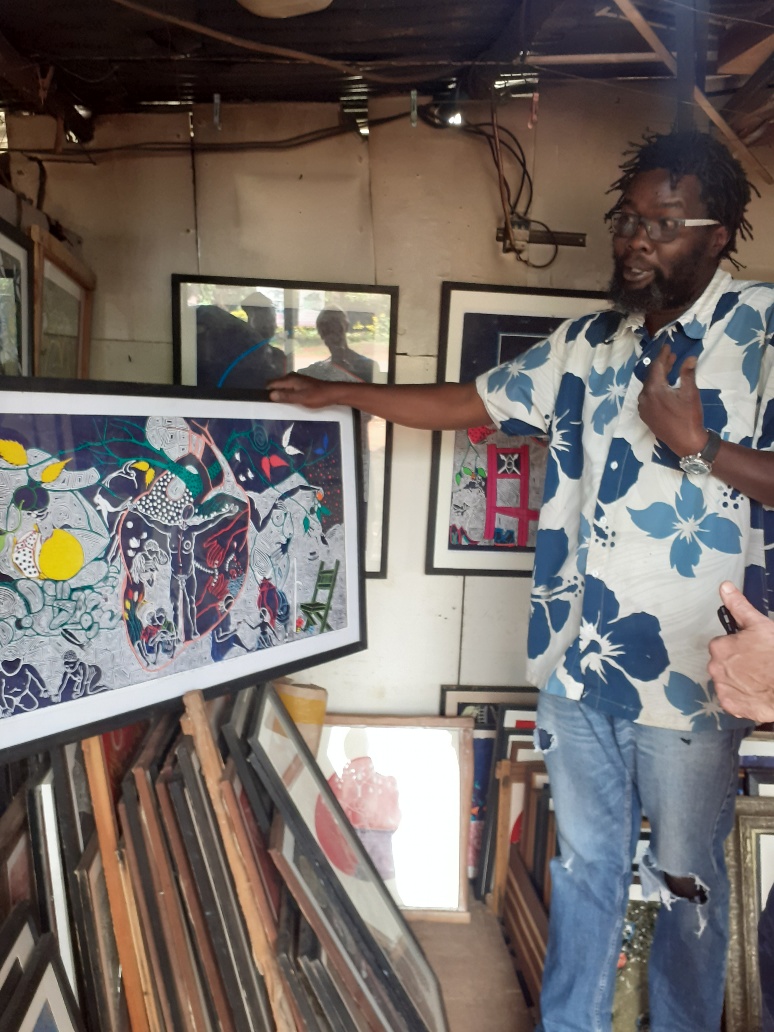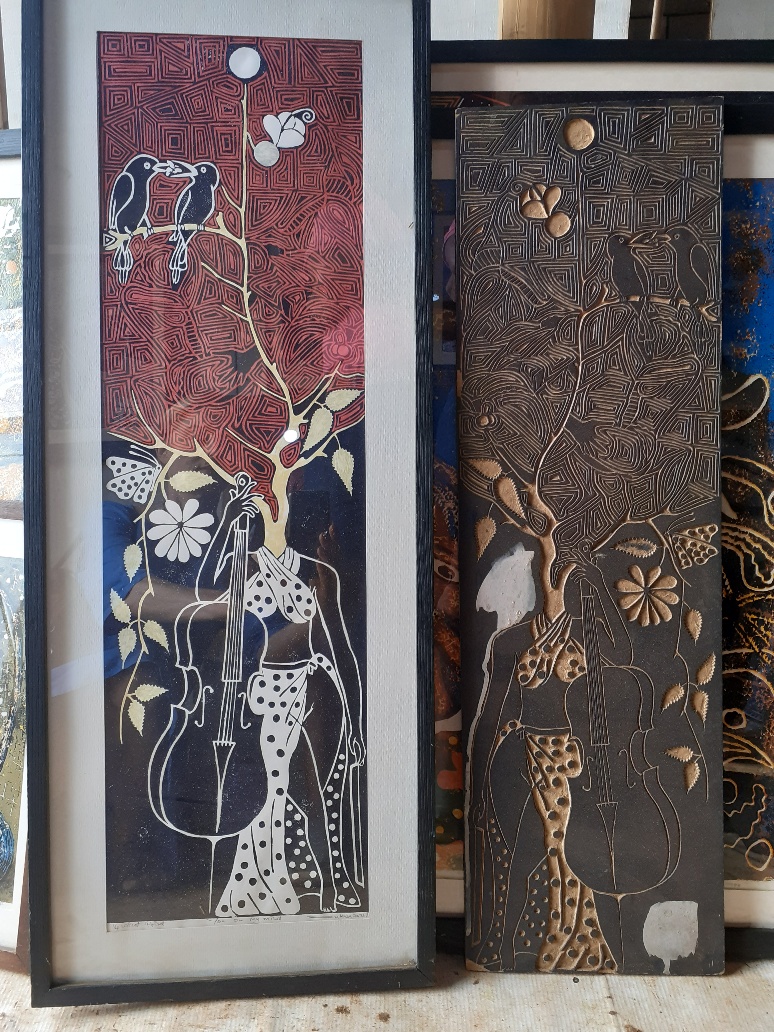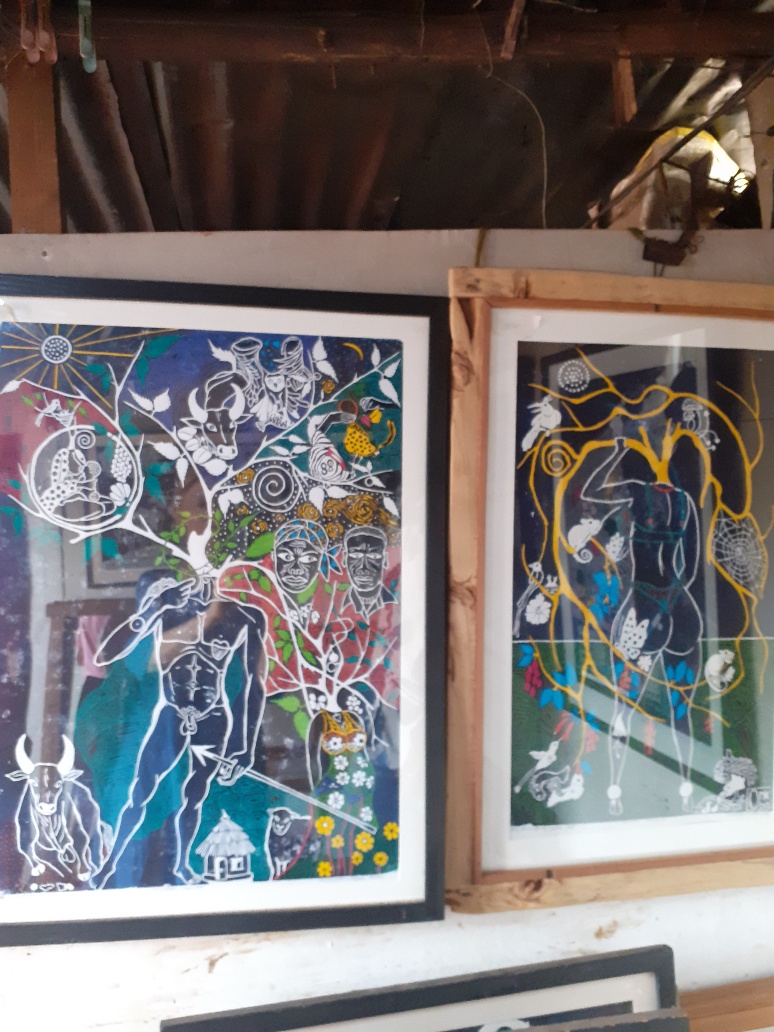TPAAE researcher Marlena Chybowska-Butler met with printmaker George Ongeri Omesa at his roadside gallery in the Loresho district of Nairobi during her recent secondment.
Born in Kisii and educated in Uganda, Omesa left a career as a bank clerk in 2014 to pursue art full-time. He trained under John Silver at the Kuona Trust art space in Kilimani. He eschews the city’s gallery system, preferring to sell pieces through the Art Kiosk, a gallery he opened initially in Karen in 2019 and then relocated to a residential district in the western suburbs of the Kenyan capital during the Covid-19 pandemic.
Omesa credits his grandmother with inspiring his artistic vision, which embraces natural and human forms through which symbolism is used to tell stories that portray social relationships and human truths. These include trees, birds, bulls and chameleons that fuse with figures on woodblocks that he then colors by hand. As a result, no two of the limited-edition prints, usually in runs of four, are the same. Earlier works include multi-layered images of man in nature made by the traditional reduction methods in which individual blocks are made for each color. And, characters that appear frequently in illustrations about urban life.
Omesa’s distaste for the gallery system limits public showings of his work mostly to charity auctions and art fairs, although his work can be seen in a branch of the Art Caffé gallery restaurant. Just as a fear of flying keeps him close to his Nairobi base. Among his regular buyers are hotels and institutional clients. He counts collectors on several continents and countries, including in Poland, where an embassy worker has acquired multiple pieces. His preferred method of providing provenance involves taking a picture with each work next to his gallery’s hoarding.
A skilled woodworker, the artist makes frames to accompany each work that can be disassembled and shipped along with prints.

